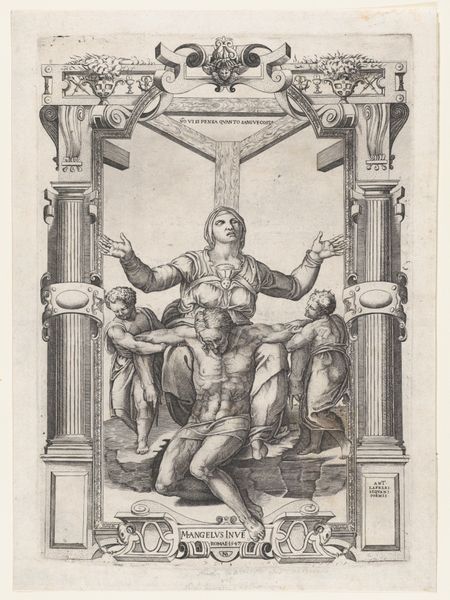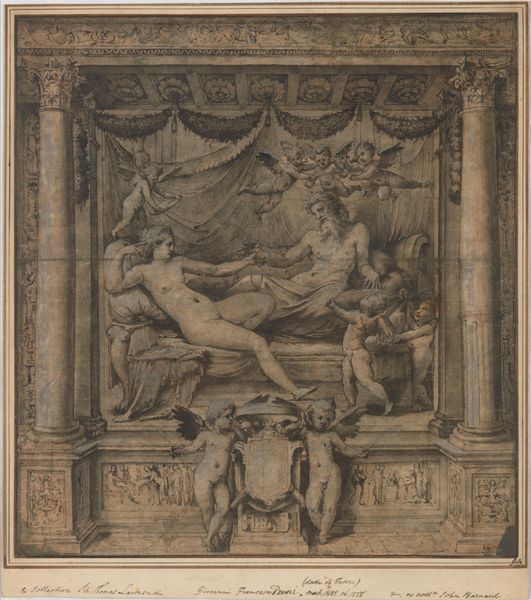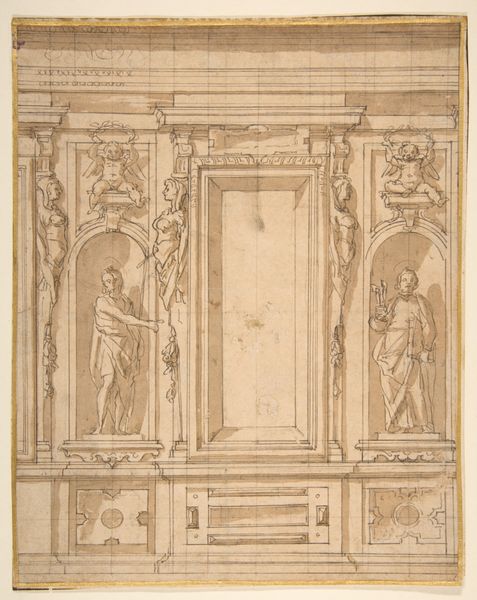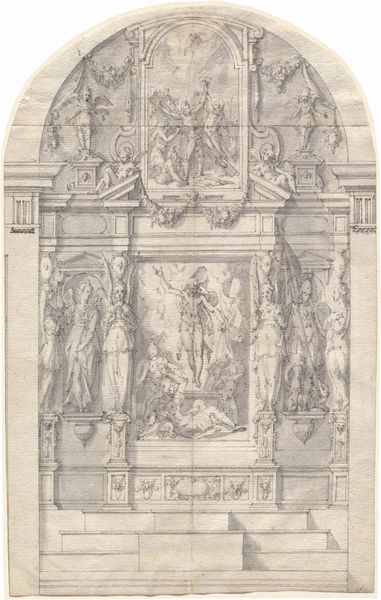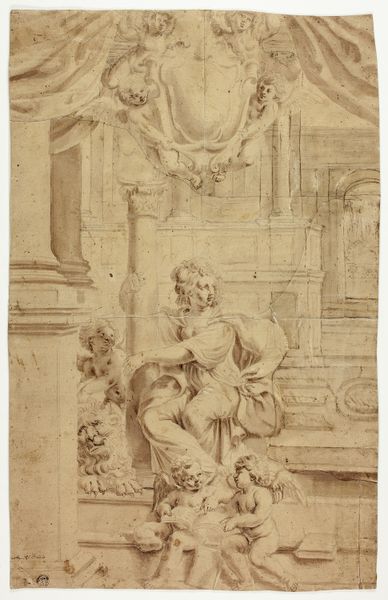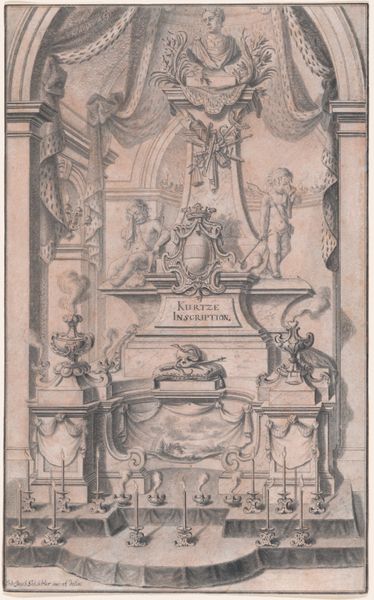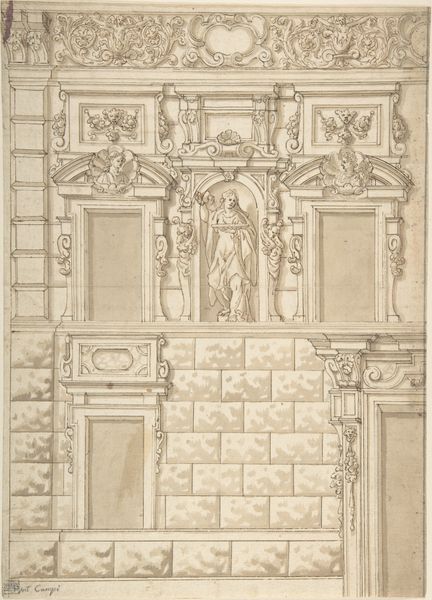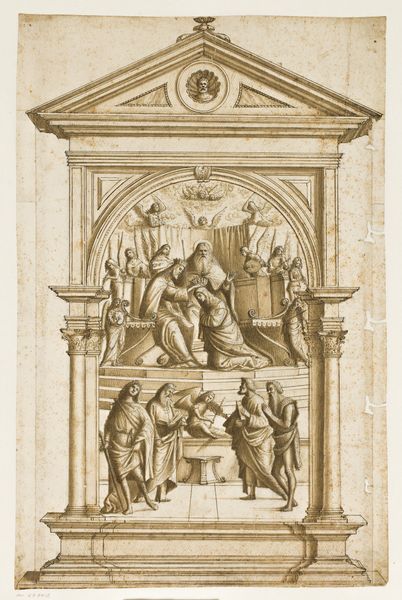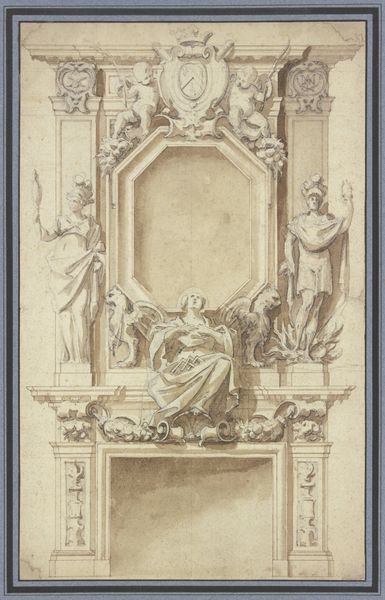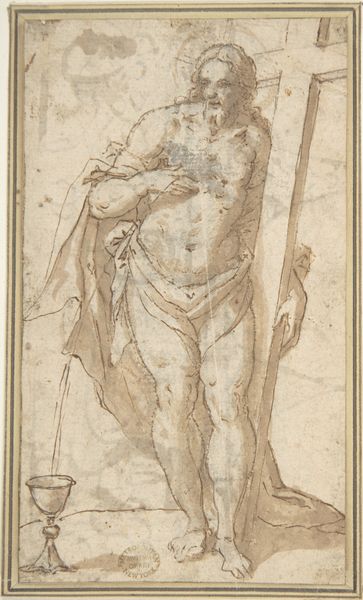
Study of a Figure in a Niche (Saint Ambrose; recto); Architectural Studies: Four Alternative Designs for Fictive Niches and an Unrelated Design with Garlands (verso), ca. 1560-67 1564 - 1565
0:00
0:00
drawing, print, fresco, architecture
#
drawing
# print
#
fresco
#
11_renaissance
#
italian-renaissance
#
nude
#
watercolor
#
architecture
Dimensions: 13-13/16 x 10-3/8 in. (35.1 x 26.3 cm)
Copyright: Public Domain
Curator: Giuseppe Arcimboldo's “Study of a Figure in a Niche,” from around 1564, offers a fascinating glimpse into the Renaissance interest in classical forms and architectural design. Editor: It gives me a feeling of almost ethereal detachment. The figure is so lightly rendered; it's like a ghost in a meticulously planned space. I see a figure study that’s simultaneously powerful and vulnerable. What's striking is how contained, even confined, it seems within its architectural surround. Curator: Precisely. Observe how Arcimboldo masterfully uses line and the suggestion of light and shadow to create depth. The structure, composed of balanced rectangles and careful ornamentation, exemplifies Renaissance ideals of order. Notice the flanking pilasters; the repeated geometrical motifs guide the viewer's eye. Editor: And I find the niche's architectural rigidity creates a palpable tension with the vulnerable nudity of the figure. Are we supposed to view it as simply a study, or as something hinting at larger power dynamics at play during the Renaissance, where the control of bodies, especially male bodies, was such a point of tension and emphasis in the name of politics? Curator: I appreciate that reading. But I believe the key lies within Arcimboldo's engagement with disegno, and its implications on ideal form. There is something so pure and direct with the simple beauty of human potentiality depicted within. The nude form recalls a long tradition, linking artistic vision to philosophical inquiry. Editor: Perhaps it is about Arcimboldo playing into both sides of the time. Both the obsession with "classicism" and purity that you rightly call out and its contradictions as artists pushed those established boundaries with new artforms. The sketch-like form pushes away from fully finished ideals in ways that open up discussion around identity and social hierarchies reflected within architecture. It offers a commentary that could challenge existing notions of idealized male form by contrasting that tradition to the imperfections that come with natural representation and form. Curator: I see your point. It also pushes forward thinking in the development of classical structure in art. By experimenting with architectural backdrops alongside the male form in artistic expression Arcimboldo asks "what if?". Editor: Definitely. In our evolving understandings, "Study of a Figure in a Niche" provides many views. By layering cultural context, with observations in the architecture and shape we get a true and full understanding. Curator: A multifaceted approach yields a richer understanding. Arcimboldo invites endless reinterpretation through study of forms alone.
Comments
No comments
Be the first to comment and join the conversation on the ultimate creative platform.
